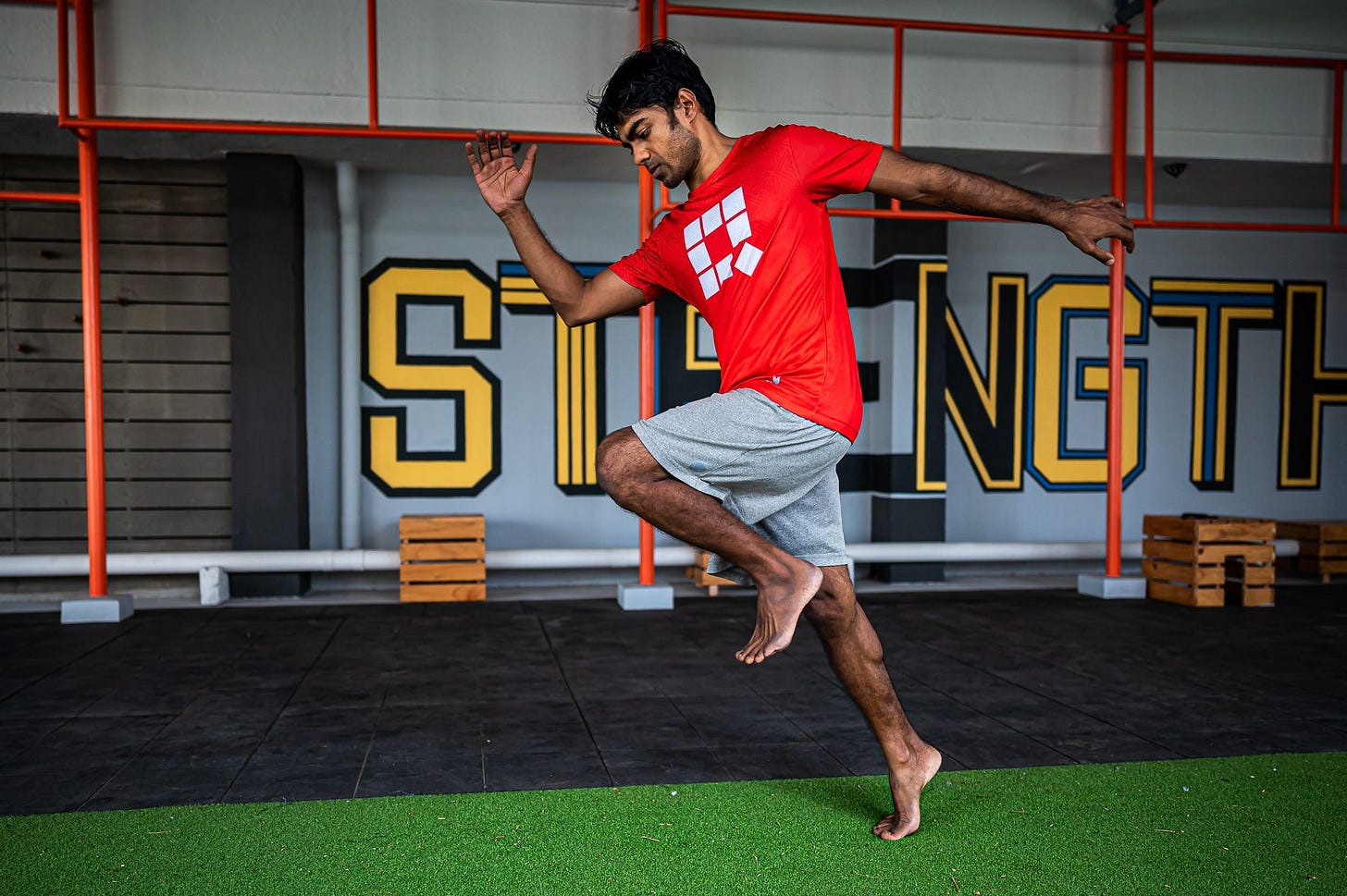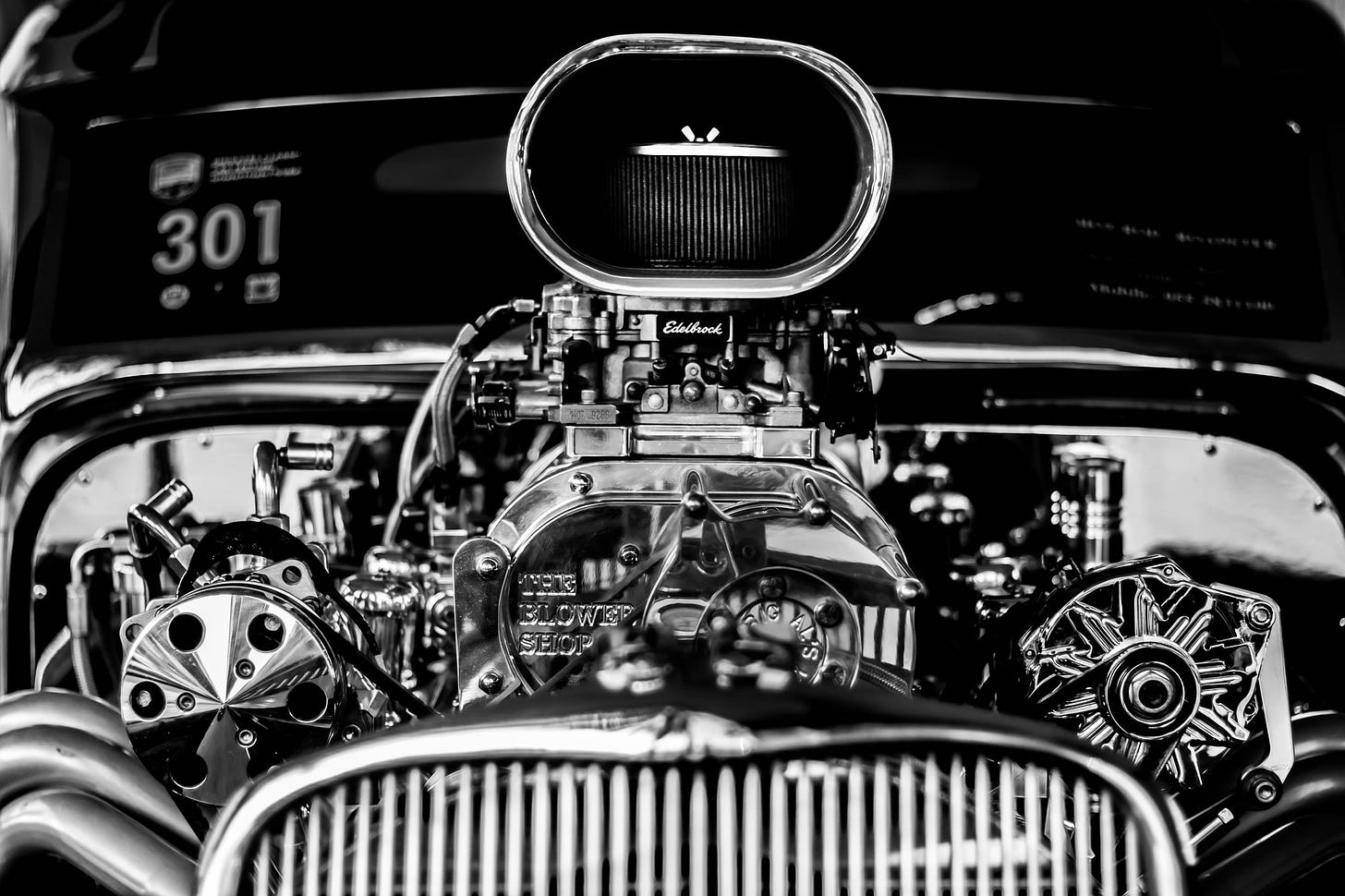Hey hey!
Here are the 3 pieces for today.
Digging deeper into conditioning and stamina. Let’s look at a few mental models which will help you unlock your training.
How can we look at the past and learn? And not just use it to whip ourselves?
Just do your best. And remember, that changes all the time.
Thought for the week
The most precious and important things in life are, by definition, nontransactional. And to try to bargain for them is to immediately destroy them. You cannot conspire for happiness; it is impossible. But this is often what people try to do, especially when they seek out self-help and other personal development advice - they are essentially saying, "Show me the rules of the game I have to play, and I'll play it," not realising that it's the very fact that they think there are rules to happiness that is preventing them from being happy.
– Mark Manson, Everything is Fucked
The end of a melody is not its goal: but nonetheless, had the melody not reached its end it would not have reached its goal either.
– Nietzsche
And from me
Being lost in the past versus introspecting the past with your foot firmly in the present.
Our memories, our regrets, our stumbles, those stupid things we said that we wish we could shove back into our mouths - they keep replaying in our heads. Randomly. Suddenly. Pops out of nowhere and leaves you feeling like shit. There's absolutely zero learning or zero growing from that experience. Just a pile of shit.
But something magical seems to happen when we don't get lost in them. Instead, when we stay firmly grounded in the present, perspective changes. Learnings happen. And it feels good. There's something positive from that negative experience. There's something beautiful that emerges from that failure.
Maybe, eventually, we can finally get rid of that bad film that keeps replaying, and replace it with something prettier.
Just do your best
Good days and bad days
At the gym, some days you just wanna rip the weight off the floor and do crazy shit with it. The bell just flies up. You feel invincible. On these days, pressing the 32 kg bell (half my bodyweight) requires minimal to zero warmup, no need to amp myself up or any such thing. I just need a few seconds of focus and punch it up.
And there are some days when the bell feels oh-so-heavy, and you are sluggish and the warmup feels like a workout itself. On these days, even pressing a 24 kg bell feels like work. Only after a reasonable amount of mobilisation work and warmup do I feel greased and even then, it feels (when I compare it to the first instance) like I did half the work.
Controllable
You cannot control this. There are just way too many days, with their own stories and intricacies and uncontrollables and beers and cakes and work stress and all that. What you do control is showing up to the gym.
And what you control once you are there is doing your best. Not checking a box, not lounging in the corner, not checking your phone half the time, mentally checked out and physically too.
The best day is not equal to the best day ever
But you confuse pressing the 32 kg with your best and pressing the 24 kg with sub-par. And therein lies the problem.
Do your best. For that day. It might mean working with a 32 kg bell. It might mean setting a Personal Record (PR). Or it might mean working with a 16 kg bell. Or it might mean going on a walk, or doing Surya Namaskaram only, and skipping the weight training.
Your best is NOT about quantity. Your best is not about output.
In fact, your best on a not-so-great day might not even be high on quality. Some days, your body just takes over. You go based on feel, and you are graceful and fluid. Some days, it feels like you have 3 left feet and one hand.
What do you do? Simple. You do your best.
Drained vs recharged
This doesn't mean shitty reps. Your best, even though it might be lower quality than your bestest best, is still you being disciplined to be present and lift to the best of your abilities on that day.
Your best definitely means showing up.
Your best means you are non-judgmental about it. On a great day as well. Oh, you can certainly celebrate the good things, but stop critiquing yourself. Instead, just watch, learn, and chalk it down as a lesson for another day.
This is a lesson I've learned the hard way at the gym.
Previously, my attitude would be to beat myself up for not being at my peak. Blaming the previous night's activities or whatever.
I'd also try to hit those numbers regardless of how I am feeling physically or mentally. All of this left me even more drained than ever. My training session which was meant to recharge me left me more drained.
Taking it out of the gym and into the rest of the day
Some days are low energy days. Some days, the grumpy goose is up. Some days, the sun is shining inside your head.
What you can do is simple - just do your best.
Instead of trying to define your best for that day as "the best ever", do your best for that day - in that context, in those constraints.
Instead of being judgmental and annoyed at yourself, drop it. It is not about output, and it is not about matching the PR. Not every day can be a PR day.
But every day, you can hit your best for that day.
It is an attitude.
Just do your best. For today.
Tomorrow is another day.
Learning this lesson at the gym took me a few years, and with more awareness, I've had a lot more recharge sessions than draining sessions. Applying this lesson to the larger field of life is something I struggle with. But the lesson is right and works for me. The rest is simple - action. And by that, I mean, I need to do my best.
Understanding stamina with a few mental models
What is endurance work?
Endurance work or cardio or conditioning, I'll use them a bit interchangeably. What are we referring to when we say those words? Strength is simple - can you lift this much? Is your body capable of producing this much force to move the largest possible load?
Conditioning is asking the question of whether you can meet the energy demands of that activity.
The activities range from running 100 metres (as fast as you can) to running a marathon (again, the goal is to run it as fast as you can but with a distance upwards of 40k, we worry much lesser about that and focus on simply completing the task.) Cricket has different energy demands, football has different ones, badminton, boxing - all sports and activities have different requirements and demands.
Intervals and steady-state
Cricket, while batting, requires you to be balanced, steady, mentally focused, and capable of executing a powerful stroke in the gap between the ball releasing and you striking it 20 metres away. And then, the requirement to sprint between the wickets. While bowling (assuming a pace bowler), you have to sprint (at least) 6 times produce an explosive jump and slingshot the ball at a ferocious pace (with accuracy).
If you think about it, these are intervals. You have one sprint, one jump, one slingshot (all chained together) and then 30-odd seconds of recovery before you have to deliver the next ball.
In running, the energy demands are steady-state. You are running at a near-constant rate, rather than the previous example of a sprint (or a peak) followed by rest and recovery.
How long is the work, and how long is the rest? That's pretty much what determines intervals. The more max effort, the longer the rest. That's why a 100-metre sprint, while only 100 metres, will take a lot out of you (if you know to sprint.)
In football, there are bursts of sprinting, slowing down, cutting and turning, walking - the intervals are constantly changing and there's a steady-state aspect of it built-in as well.
Production and Utilisation
Let's use some metaphors and dig a little deeper. And remember, metaphors and mental models are inaccurate i.e. do not take them literally.
Broadly speaking, there are two parts to conditioning - production and utilisation. Let's take a car. To drive this car from point A to point B, what factors does it depend on?
What's the size of the engine i.e. how much power is it capable of producing?
What's the size of the fuel tank i.e. how many litres of fuel does it hold?
What's the fuel efficiency i.e. does it give 5 kmpl or 25 kmpl?
How good is the onboard computer i.e. is the software pretty good in how it makes all the parts work together?
How good are the individual parts themselves i.e. are the tyres great and are the gears in solid condition, nothing leaking or being inefficient or needs servicing?
All of these are factors in your conditioning.
Size of the engine
Your strength plays a role in how much force and power you can produce.
The bigger the engine, the more power it can produce.
That does not mean you want the biggest possible engine. You need to figure out what the right engine size is for you. Do you want a 50 kg squat? Or a 100 kg squat? Or a 10 kg squat?
The fuel tank
The fuel of the body is something called ATP, which we won't get into. But similar to petrol/diesel, your body needs to produce ATP, and supply the ATP to ensure continued activity. When we run out of fuel (we don't really, but it is simpler to stick to that being the case) we find ourselves stopping. Say you are walking up 50 flights of stairs - after a while, the legs start to burn, the breathing gets erratic, and you pause to rest. The engine has overheated of sorts and needs to cool down. The rate of energy demand has exceeded the supply, and so we stop output for a bit and let it catch up. As we start doing activities and use up fuel, our body gets better at upping the fuel stores. Similar to the size of the engine growing as we build strength, our fuel tank grows as we keep activity consistent.
Fuel efficiency
Efficiency is about how much work you can do with the least possible fuel. How gracefully you move, how efficient your heart rate and aerobic system is are all factors for fuel-efficiency. The more graceful you are, the more efficient, and the less energy you waste in a movement. Think about your heart rate similar to the RPM.
And your aerobic system is one of the three energy systems in the body - the ones that keep creating new fuel in the presence of oxygen. When you are walking, you are breathing nice and deep and slow. And you can keep walking for a significant amount of time without feeling tired. Because your fuel is constantly replenished. But when we sprint (an anaerobic activity i.e. think of it like NOS from the Fast and the Furious movies), we use up the fuel much faster. And replenishing it takes time. That's what interval training is - use up fuel and then build it up again during the recovery period.
The computer
The onboard computer is your brain. It does what it does and as you know, the software can always be improved. By focused learning and application, not dissimilar to any other skill you've acquired over the years.
The parts themselves
The individual parts require care. If you have a rusted gasket (whatever a gasket is), things go south. If you have a leaky cylinder or fuel tank, you can see how issues crop up sooner, rather than later. Similarly, if you have an injury on one leg, or if your glutes don't fire, or your pillar is not stable - you are doing the equivalent of what a car looks like from the outside with a tyre punctured, the machinery grating inside etc
How do we improve our conditioning?
As you can see, there are multiple ways to improve our conditioning. And to be clear, I've barely scratched the surface of energy systems, how each one needs to be manipulated differently, the various protocols that are possible. Because it is unnecessary at the start. By starting at the start, what we can do are
Get stronger. Increase the size of the engine to your Goldilocks zone.
Do intervals and steady-state training. Intervals allow for near-infinite possibilities. For example, 10 seconds of work followed by 60 seconds of rest to 3 minutes of work followed by 90 seconds of rest and everything in between allows multiple methods. Steady-state does not only mean "run for an hour". Anywhere from 10 minutes to 90 minutes will challenge you differently. You will be producing output at a different rate across all of these timeframes.
Work on your breathing. In fact, breathe through your nose as much as possible while doing steady-state training.
Use a heart-rate monitor or utilise the talk test. If you use a monitor, waiting until it comes down to 120 bpm is a great place to start before you start the next bit of work. The talk test is simple - speak out loud a sentence (10-20 words) and when you can say it normally and not with gasps or holding your breath or whatever - you are recovered and ready to go.
Work on your mobility and flexibility. Be pain-free. Ensure your joints are moving well, there are no compensations. This is much harder than you think. Yoga is a good start.
The onboard computer improves with mindful training. Listen to your body, don't go overboard and just do your best.
Benchmarks
Your resting heart rate. Measure it for the next 7 days. Keep the average. Do this every month (most wearables will do this daily for you and save you the trouble)
10-minute run. Measure the distance. If you improve this, whatever you are doing is improving your conditioning.
A benchmark based on your activity of choice. If you are a fast bowler, then 6-8 repeated sprints is a great benchmark.
I hope this post enlarged your thinking about cardio, stamina and conditioning. While this was not a thorough review or even a step-by-step one, I believe that a better mental model about how things work and why will help you figure things out. And that's what I've aimed to do here.
If you have any questions or if I have confused you and you'd like me to clarify, do write to me.
And that’s it for this week. I’ll see you next Sunday. Chill until then.



















Share this post